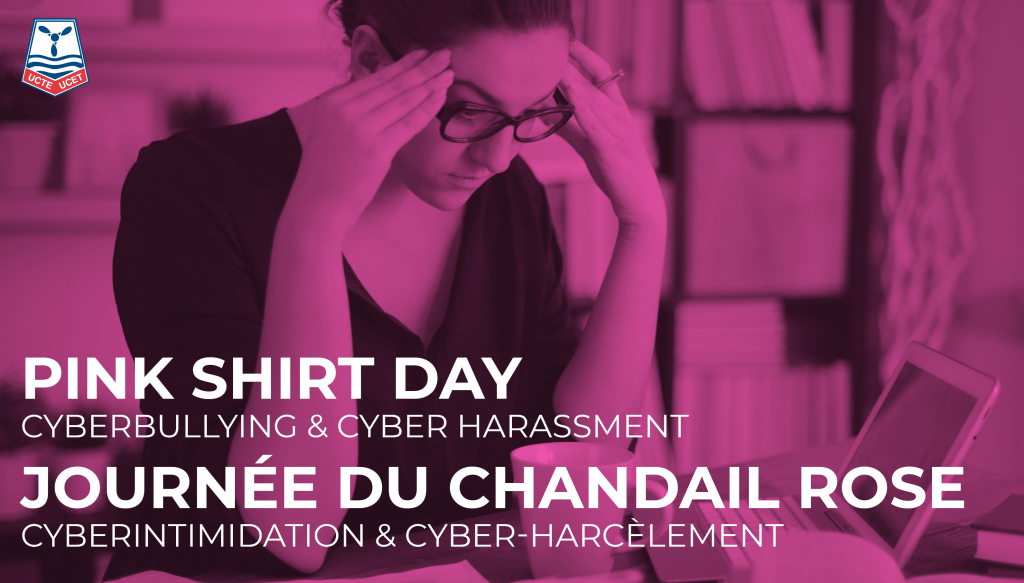Pink Shirt Day – Anti-Bullying Day
Inspired by an act of solidarity by some Nova Scotia teens to support a young student who was bullied for wearing a pink shirt to school, Pink Shirt Day is a day to raise awareness of bullying and its consequences. Unfortunately, bullying is not limited to schools. It can be found in the workplace, at home, and even online.
According to the Canadian Human Rights Commission:
Harassment is a form of discrimination. It is any unwanted physical or verbal behaviour that shocks or humiliates. In general, harassment is behaviour that persists over time. Serious one-off incidents can sometimes also be considered harassment.[1]
Harassment may be related to comments about your race, religion, gender, age, disability or any other ground of discrimination. These remarks may make you feel uncomfortable, threaten or intimidate you.
During this pandemic, many of us work at home and so are less in touch with people, but we are still at risk of cyberbullying.
There are several tools used for this type of behaviour:
E-mail, Web and social networking sites, chat rooms, blogs, instant messaging and text messaging are all ways to threaten, harass or defame others. [2]
It is important to recognize that cyber-bullying and cyber-harassment is present in workplaces. Such behaviour “could trigger a complaint of psychological harassment in the workplace put before the Commission des normes du travail, and sometimes may even constitute a crime.[3]” It is important not to dismiss this type of harassment because it employs digital tools. Here are several types of cyberbullying that could arise in the workplace or with loved ones:
DIFFERENT FORMS OF CYBERBULLYING:
- The transmission of a lot of unsolicited and/or threatening e-mails;
- The incitement of third parties to transmit unsolicited and/or threatening e-mails to the victim, or an overload of such e-mails ;
- The electronic sabotage of computers or websites and social media platforms through the transmission of viruses;
- The dissemination of defamatory comments in public debates on the Internet;
- The online use of a person’s identity to transmit a controversial, offensive or insulting message that provokes a negative response or backlash from third parties;
- Online harassment in chat rooms;
- Recording abusive messages and comments from a website;
- Dissemination of offensive or degrading images and materials;
- Creation of websites, Facebook pages, or Twitter accounts that disseminate disparaging and vexatious comments that undermine dignity and integrity; [4]
Whether in person, or via an electronic device, bullying is bullying.
[1] https://www.chrc-ccdp.gc.ca/eng/content/what-harassment-1
[2] https://www.securitepublique.gouv.qc.ca/police/publications-et-statistiques/statistiques/cyberintimidation.html
[3] http://www.justiceetdroit.ca/avocat_cyber_intimidation.htm#:~:text=La%20cyberintimidation%20au%20travail%20ou,normes%20du%20travail%20et%20m%C3%AAme
[4] http://www.justiceetdroit.ca/avocat_cyber_intimidation.htm#:~:text=La%20cyberintimidation%20au%20travail%20ou,normes%20du%20travail%20et%20m%C3%AAme
